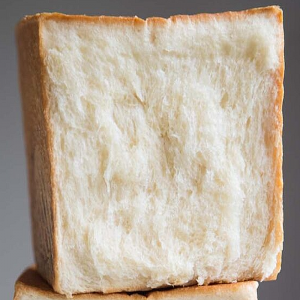Shokupan (Japanese Milk Bread)
Shokupan 食パン, this Japanese bread with endless tenderness, will melt you away! Between milk bread and sliced bread, it combines the best of both worlds to offer a soft, airy crumb, like a cloud. This bread stands out for its unique preparation method, Yudane, a very simple starter to make but highly effective in guaranteeing an incomparable softness.
The secret? A recipe without eggs, with very little butter and sugar, making this bread the ideal companion for your breakfasts or savory meals, whether in slices or for delicious croque-monsieur. Easy to prepare and shape, the soft and malleable dough will give you both visual and tactile pleasure, while allowing a spiral shaping that makes the crumb even more delicate.
Shokupan keeps wonderfully well! Keep it well-wrapped, and you can enjoy its soft tenderness for 2-3 days.
 Garanties sécurité
Garanties sécurité
(à modifier dans le module "Réassurance")
 Politique de livraison
Politique de livraison
(à modifier dans le module "Réassurance")
 Politique retours
Politique retours
(à modifier dans le module "Réassurance")
Shokupan (Japanese Milk Bread)
History and Origin of Shokupan (Japanese Milk Bread)
Shokupan is a Japanese milk bread, soft and fluffy, commonly consumed for breakfast or used in traditional sandwiches such as Tamago Sando (omelette sandwich) or Fruit Sando (fruit sandwich). This bread has an airy texture and a subtle sweetness, making it an ideal choice for recipes where a light yet flavorful base is desired.
The history of Shokupan dates back to the late 19th century, when Japan began to open up to Western influences. Before this period, the Japanese mainly consumed rice, but with the arrival of Western culture, bread consumption began to rise. Shokupan is the result of the fusion between Japanese tradition and Western baking methods. It is particularly cherished in Japanese households and is often made in an artisanal manner.
Shokupan is known for its square or rectangular shape, often achieved using a special pan, and for its light, airy yet dense texture. While the ingredients are relatively simple, this bread has gained great popularity due to its sweetness and versatility.
Shokupan Recipe (Japanese Milk Bread)
Ingredients:
- 500g of all-purpose flour (type T45)
- 10g of salt
- 50g of sugar
- 10g of powdered milk
- 8g of instant dry yeast
- 300ml of warm milk
- 50ml of heavy cream
- 50g of unsalted butter (softened)
Instructions:
Dough Preparation:
- In a large bowl, combine the flour, salt, sugar, and powdered milk.
- In a separate bowl, dissolve the dry yeast in the warm milk. Let it sit for about 5 minutes until the yeast becomes frothy and active.
- Add the yeast mixture into the flour mixture. Then, incorporate the heavy cream into the mixture.
Kneading:
- Knead the dough by hand or using a stand mixer until the mixture is smooth and well combined.
- Add the softened butter and continue kneading until the dough becomes smooth and elastic. This will take about 10 to 15 minutes. The dough should be soft to the touch, slightly sticky, but not overly sticky on your fingers.
First Fermentation:
- Shape the dough into a ball and place it in a lightly oiled bowl to prevent sticking.
- Cover the bowl with a clean towel and let the dough rise in a warm place for about 1 to 2 hours, or until it has doubled in size.
Shaping:
- Once the dough has doubled in size, punch it down gently to release the air.
- Divide the dough into two equal portions.
- Flatten each portion into a rectangle with your hands, then roll them into cylinders, making sure to seal the edges tightly.
Second Fermentation:
- Place the dough rolls into a buttered bread pan (approximately 20 cm in length).
- Cover the pan and allow the dough to rise again in a warm place for about 1 hour, or until the dough reaches nearly the top of the pan.
Baking:
- Preheat your oven to 180°C (350°F).
- Bake the bread for about 30 to 35 minutes, or until the top is golden and the bread sounds hollow when tapped lightly on the top.
- If the top of the bread browns too quickly, you can cover it lightly with aluminum foil to prevent burning.
Cooling:
- Allow the bread to cool in the pan for a few minutes, then remove it from the pan.
- Let it cool completely on a wire rack before slicing.
Tasting Tips and Variations
Shokupan is perfect for sandwiches, but it can also be enjoyed on its own with a bit of butter, jam, or as an accompaniment to soup. Its texture is ideal for recipes such as Tamago Sando (omelette sandwich) or Fruit Sando (fruit sandwich), which are classic in Japanese cuisine.
Another interesting variation is to prepare toasted Shokupan, where you lightly brown each slice of bread in a pan or toaster to get a crispy texture on the outside while maintaining its softness inside.
Shokupan keeps well at room temperature for a few days, and it can also be frozen for longer storage. Simply slice the bread before freezing, then toast or reheat it when needed.
In Summary, Shokupan is a deceptively simple bread, yet it offers an incomparable texture and sweetness. Easy to make at home, it allows you to recreate a piece of Japanese cuisine in your own kitchen.


